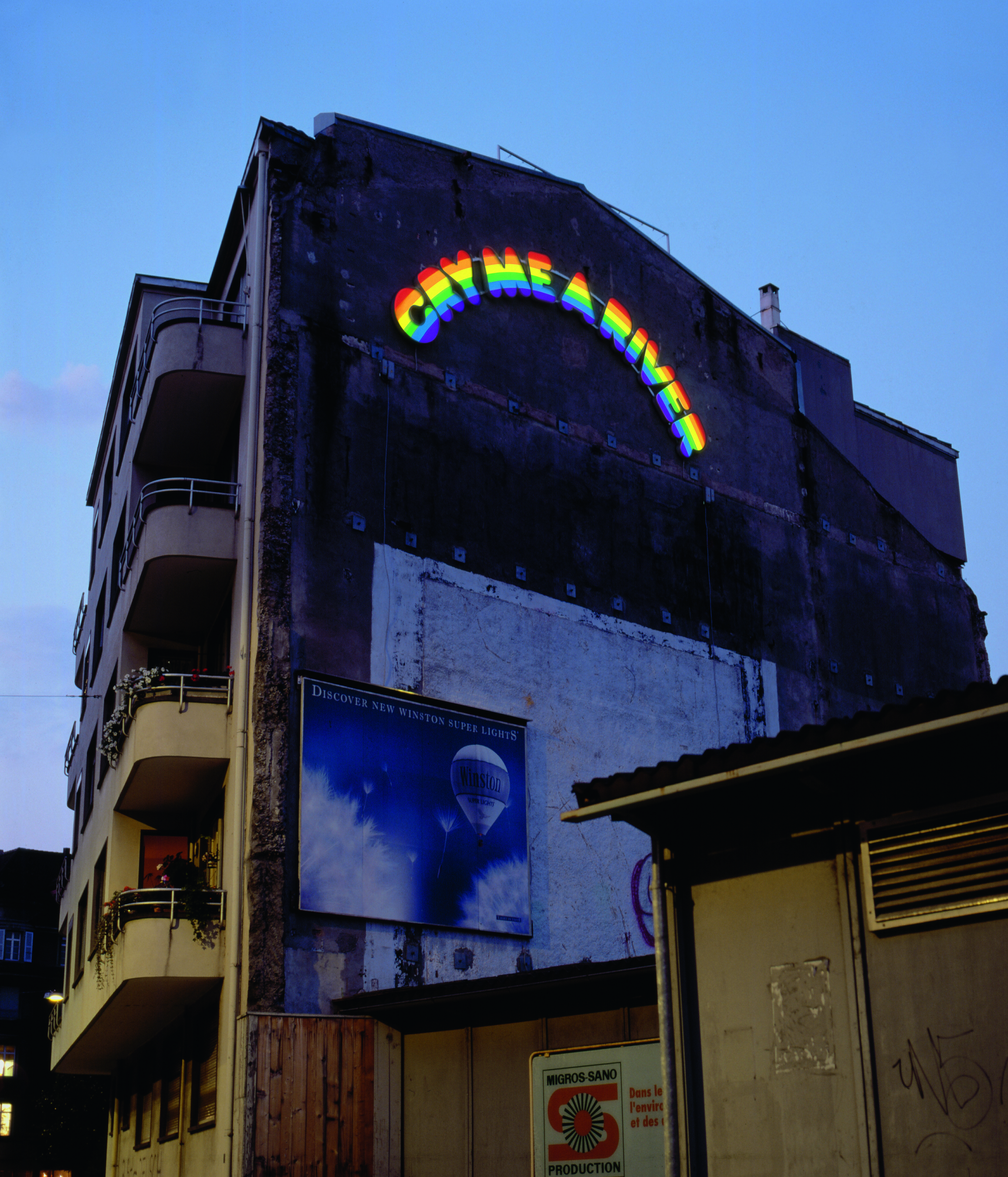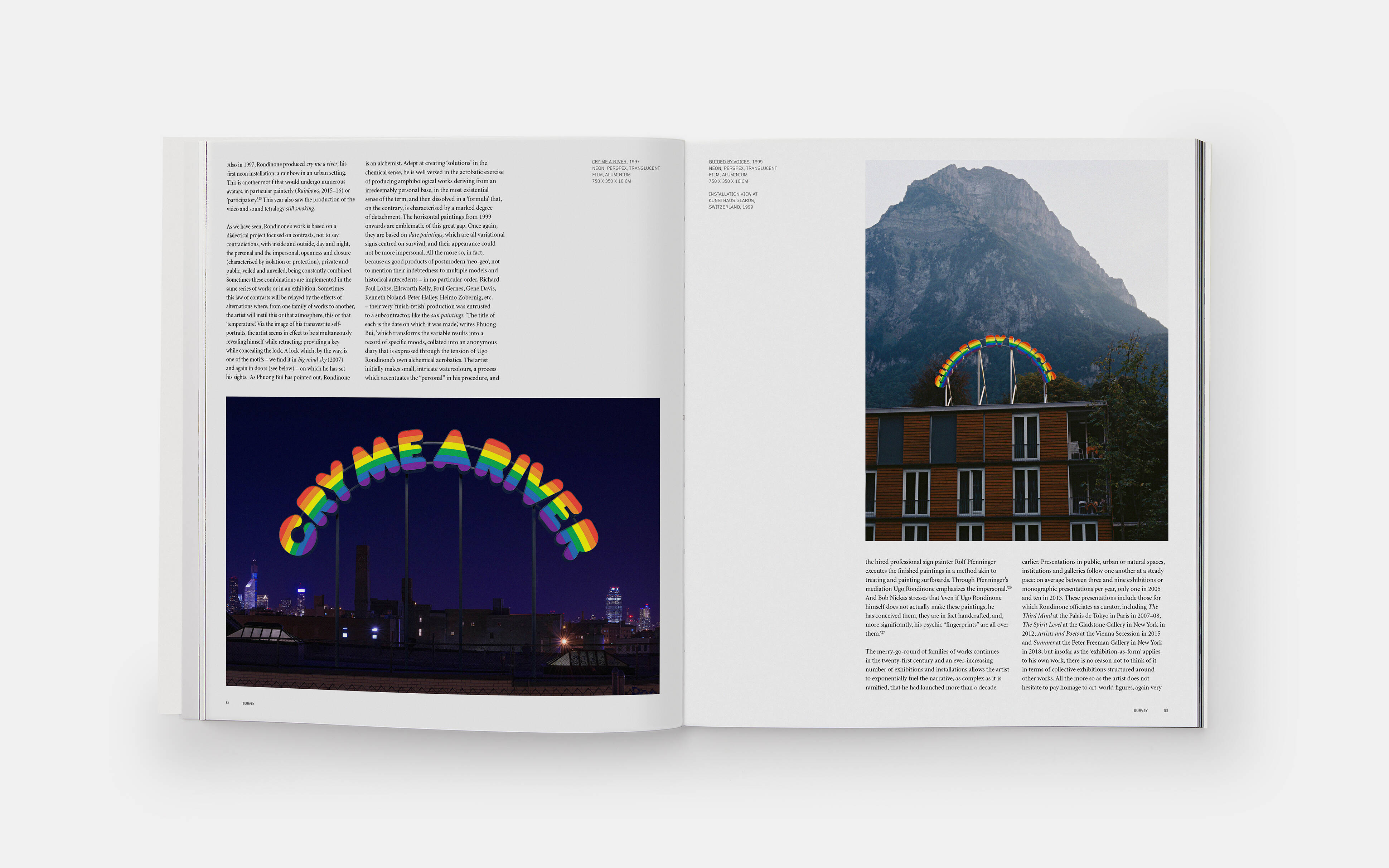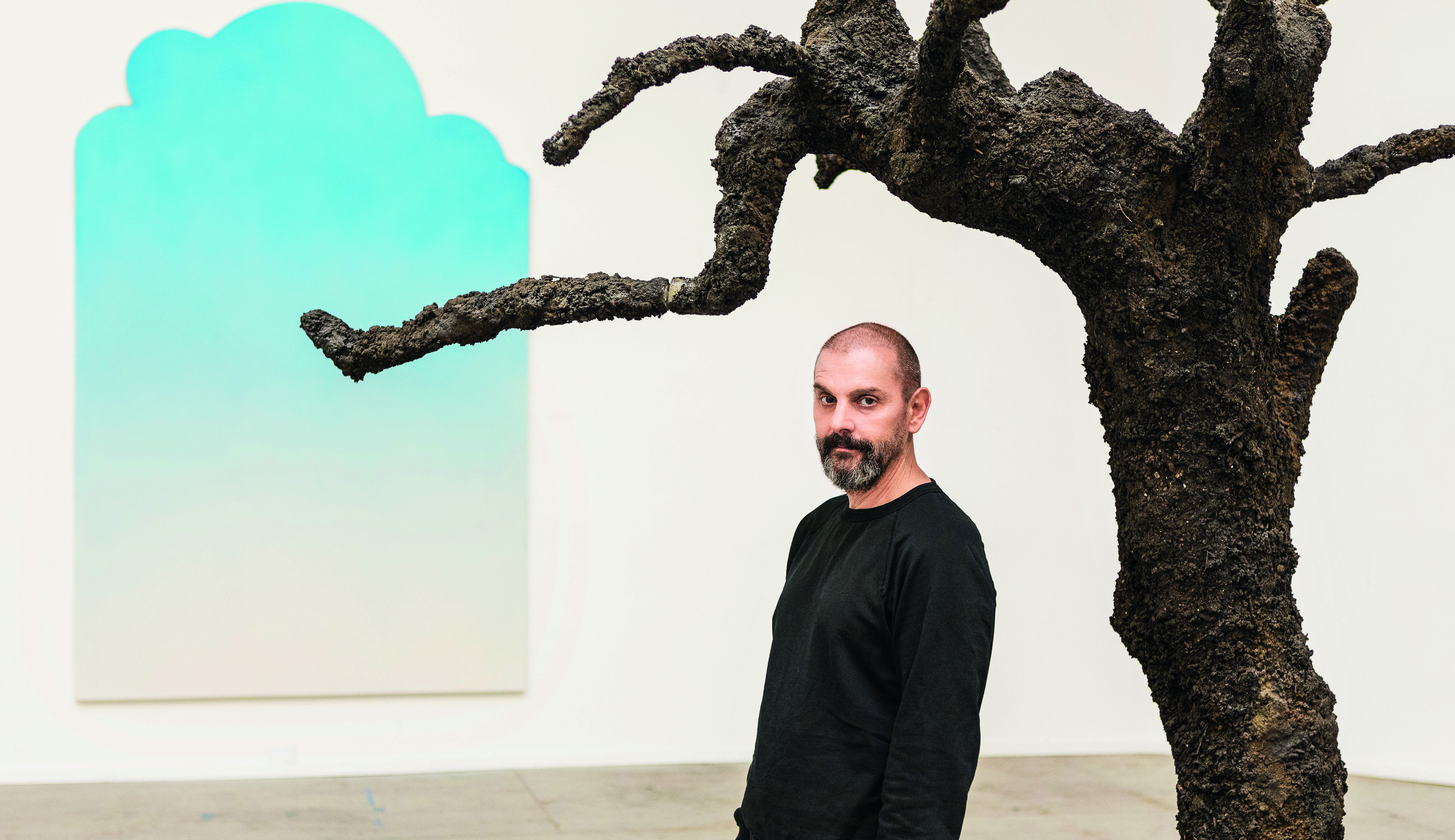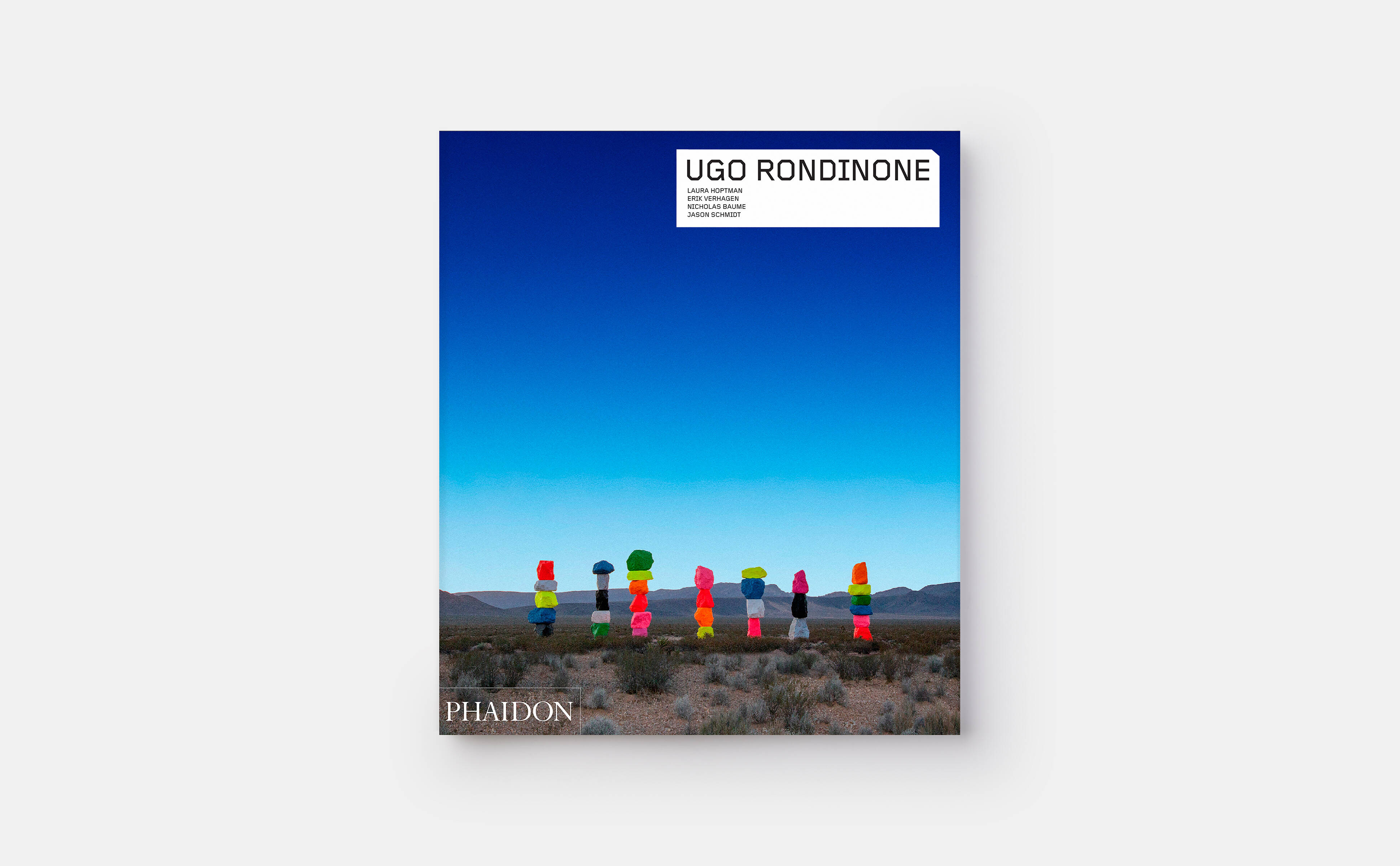
The positive message in Ugo Rondinone’s rainbows
Our new book reflects on the celebration of queer identity in some of the Swiss artist's best-loved works
At the turn of the millennium, when the artist Ugo Rondinone fell in love with the poet John Giorno, he made a rainbow. Or more accurately, a rainbow-coloured sign. It read ‘LOVE INVENTS US’, and it stood over Galerie Hauser & Wirth & Presenhuber in Zurich in 1999. The simple message formed part of Rondinone’s ‘night rainbows’ series, as the artist tells Laura Hoptman, director of The Drawing Center in New York, in our forthcoming Contemporary Series Artist monograph.
The first of these rainbow creations, entitled CRY ME A RIVER, was created back in 1997. “I used a popular symbol, the rainbow, as a vehicle to charm the world with a poem," Rondinone says. "And as a queer man I had my personal attachment to the rainbow. We were still impacted by the AIDS crisis at that time, and I felt it was important to make a gay positive public statement.”

Pages from Ugo Rondinone
Over the following decades, Rondinone made 17 of these night rainbows. Some, such as HELL, YES!, installed outside FA Projects, in London in 2001, or OUR MAGIC HOUR, which could be seen outside Sydney’s Museum of Contemporary Art in 2003, were positive and assertive.
Others though, including A HORSE WITH NO NAME, which stood over Matthew Marks gallery in New York in 2002, and KISS TOMORROW GOODBYE, which topped Rome’s Palazzo delle Esposizioni in the spring of 2001, were a little less so. This, Rondinone says, was entirely intentional. The works are “ambivalent and fluid – like a poem.”
The underlying image, however, remained the same: a rainbow, which carries both social and spiritual positivism, and is closely associated with Gay Pride , but also forms part of our natural world.
In order to try and come to terms with the death of his partner in 1988, Rondinone said “I turned away from grief and found a spiritual roadmap for solace, regeneration and inspiration in nature,” “In nature, you enter a space where the sacred and profane, the mystical and the mundane, vibrate against one another. This new base found in nature would inform my work for the next thirty-three years.”

Ugo Rondinone at Studio Rondinone, 2019
Nicholas Baume, artistic and executive director of the Public Art Fund, reflects on these spiritual yet poppy works elsewhere in our book, focussing on Rondinone’s use of the text CRY ME A RIVER, “the name of a bluesy torch song from the 1950s”, for a rainbow-coloured public billboard attached to the side of Kunsthaus Centre d'art Pasquart, in Biel, Switzerland, in ‘97.
“The piece juxtaposes the melancholic sentimentality of the lyric with the colourful festivity of the rainbow, creating an internal atmospheric tension typical of his work,” writes Baume. “Similarly characteristic is the adaptation of a highly recognisable motif found in nature: the rainbow. It makes reference, at the same time, to the rainbow flag, which had by then emerged in the lesbian and gay community as a popular symbol.
“On the apartment building wall, lower down, was a cigarette billboard advertisement. Cry Me a River effectively took up the invitation to play among recognised commercial forms and in the process generate something unfamiliar to the context,” Baume concludes.”Was it advertising? Was it a public-service announcement? Was it happy or sad? Was it American? Was it a comfortingly sentimental moment of nostalgia or a queer statement of mourning, overcoming pain and loss? Or something else? As a work of art, it was none and all of the above, rerouting our familiar perceptual circuitry and inviting an open-ended, personal response.”

To discover more about this important contemporary artist, pre-order a copy of our Ugo Rondinone monograph here..